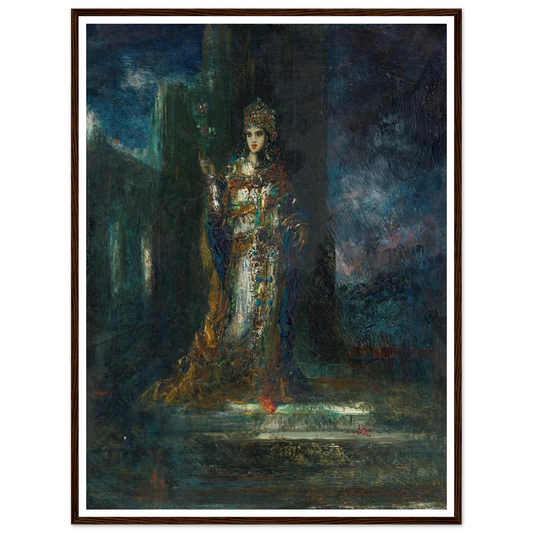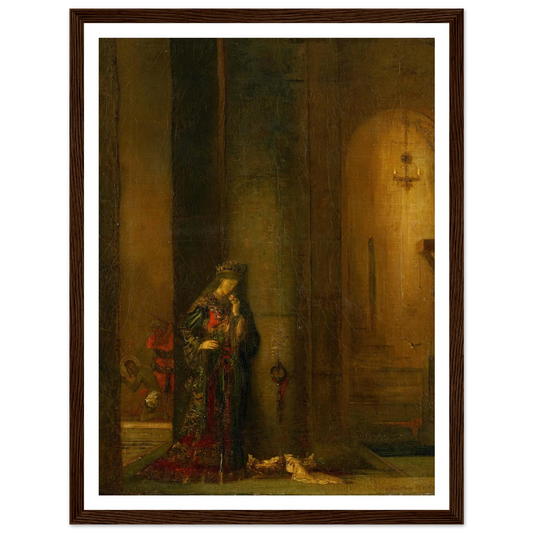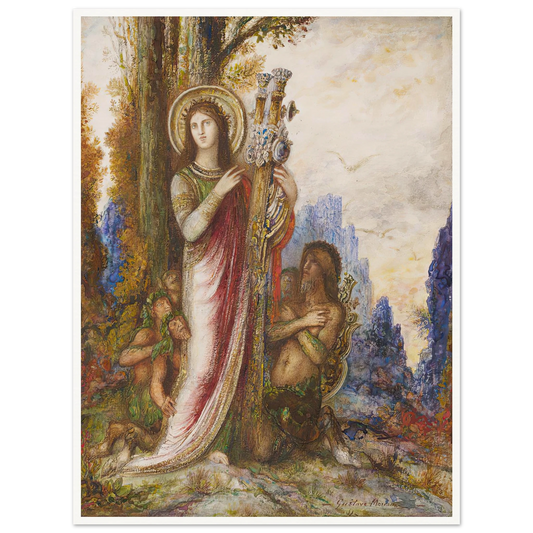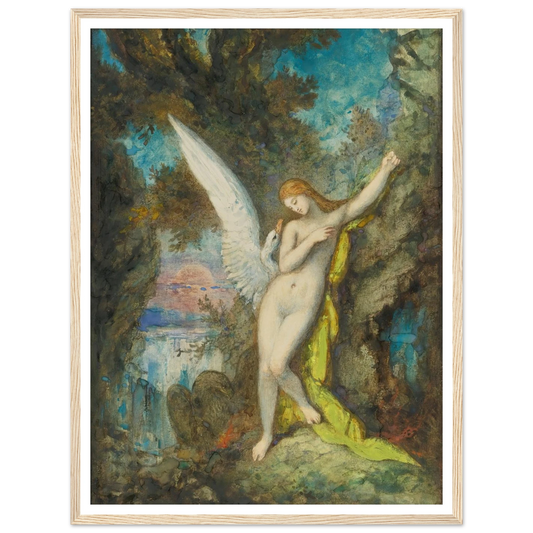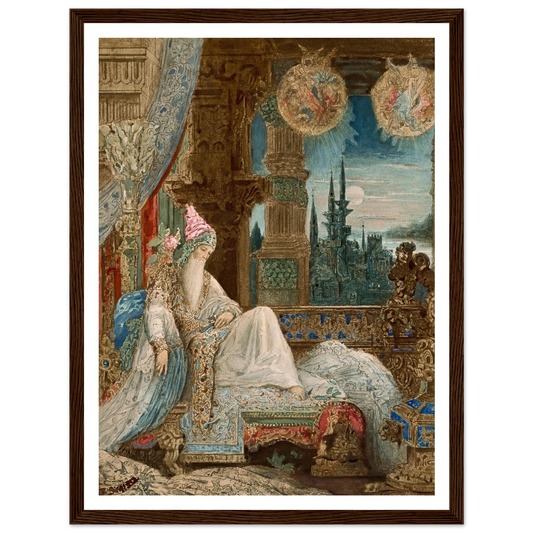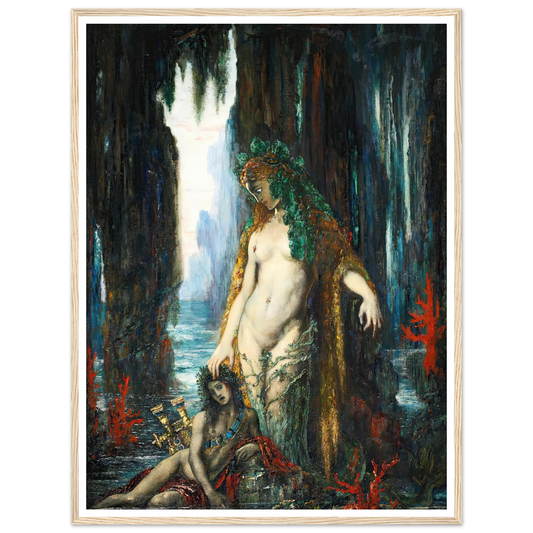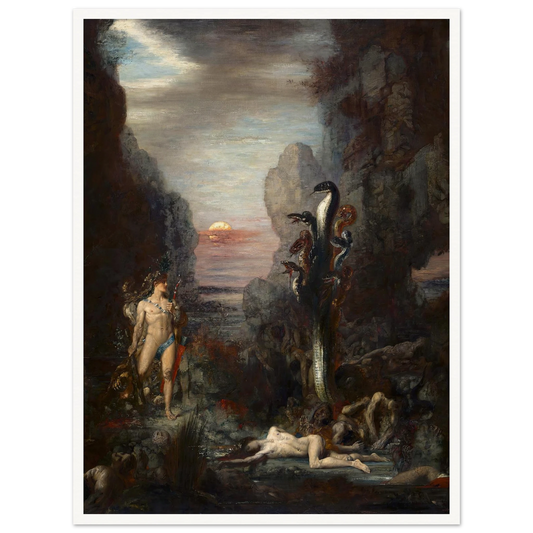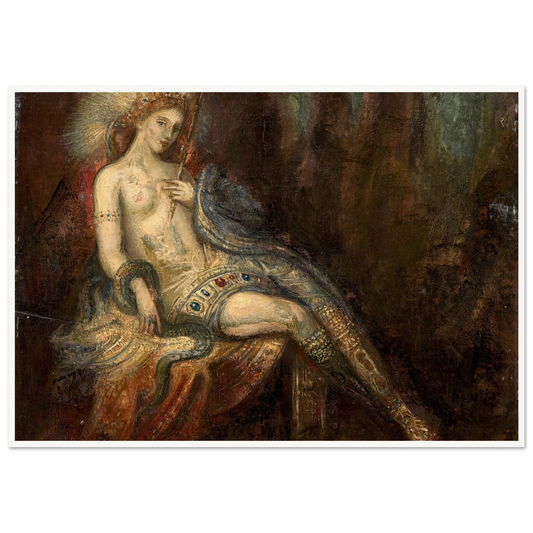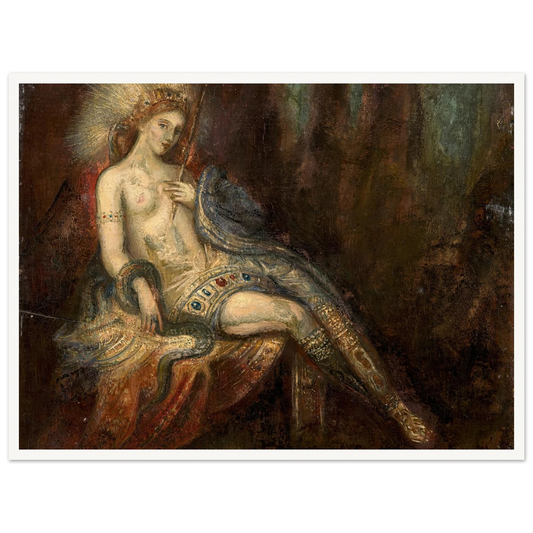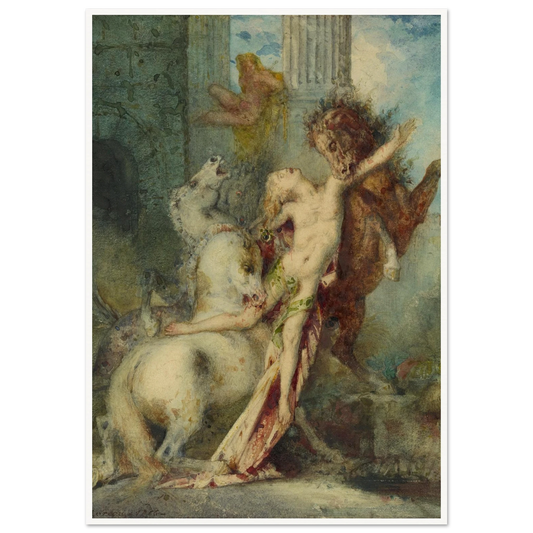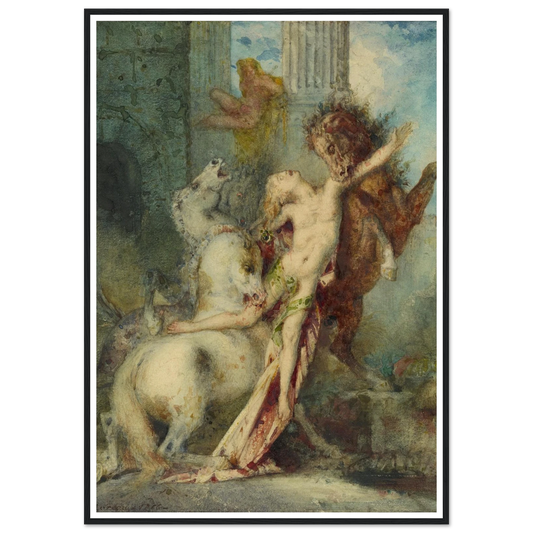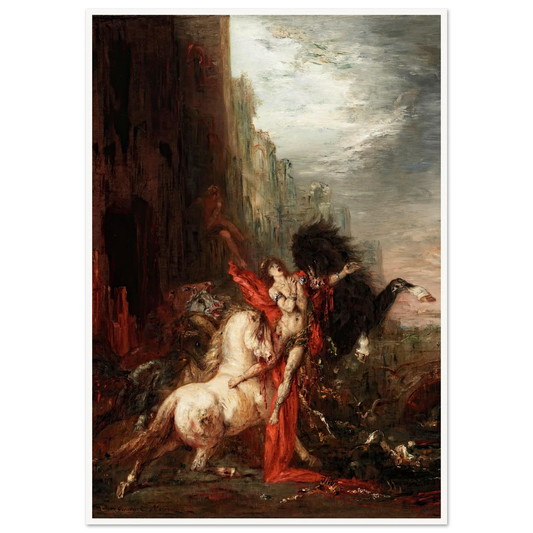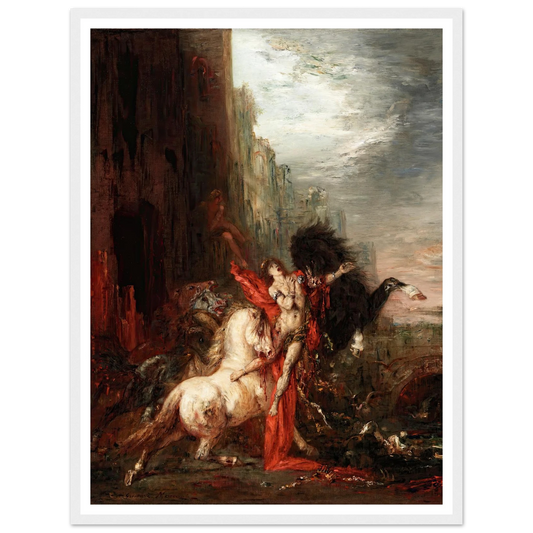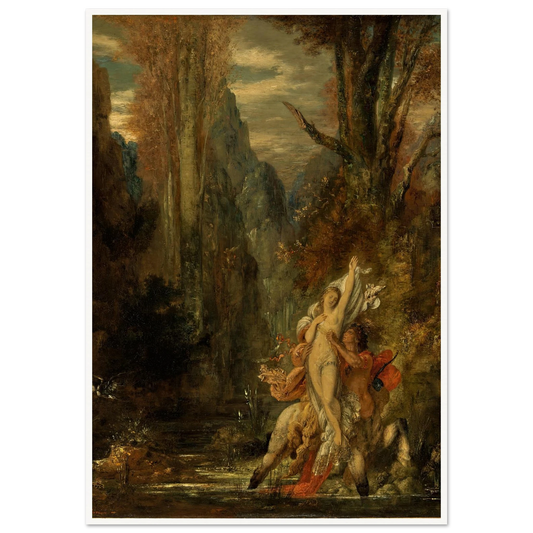Gustave Moreau was a visionary French painter best known for his intricate, symbolic, and often fantastical works that became central to the Symbolist movement. A master of mythological and biblical themes, Moreau's art explored the inner realms of imagination, spirituality, and human emotion with extraordinary complexity and detail.
Born in Paris into an educated and supportive family, Moreau was trained at the École des Beaux-Arts and steeped in the traditions of classical and Renaissance art. Yet he gradually turned away from academic realism, instead creating elaborate compositions filled with jeweled color palettes, ornate costumes, and surreal dreamscapes.
His most iconic subjects included Salome, Orpheus, and other figures drawn from mythology and religion, which he interpreted through a lens of psychological depth and personal symbolism. Moreau's works were often considered mystical and enigmatic, standing apart from the rising trends of Impressionism and Naturalism.
In addition to his role as a painter, Moreau became a highly influential teacher at the École des Beaux-Arts, where he mentored future pioneers of modern art, including Henri Matisse and Georges Rouault. His home and studio in Paris were later transformed into the Musée Gustave Moreau, preserving his vast legacy of over 1,200 paintings and 5,000 drawings.
Gustave Moreau’s work continues to captivate audiences with its fusion of sensual beauty and metaphysical intensity. He remains a key figure in the transition from academic art to the modernist movements that followed, embodying the Symbolist quest to reveal truths beyond the visible world.



